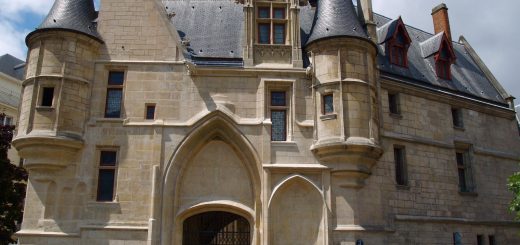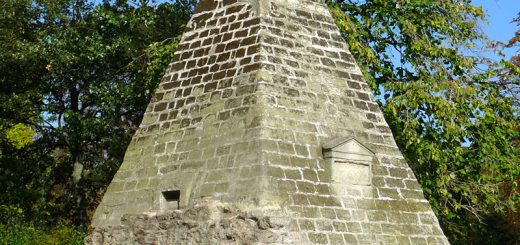Paris and its 4 triumphal arches
The triumphal arch on the Place de l’Etoile, at the top of the Champs-Elysées, is world famous. But this monument from the Antiquity (the Romans having planted some everywhere) is in fact much more common in Paris than one may think.
The St-Martin and St-Denis gates, tributes to Louis XIV
The first two arches are located on the edge of the 3rd arrondissement. These are the Portes Saint-Denis and Saint-Martin which were built in the 1670s.

Porte Saint-Martin
Photo par Groume / CC 2.0 (Flickr)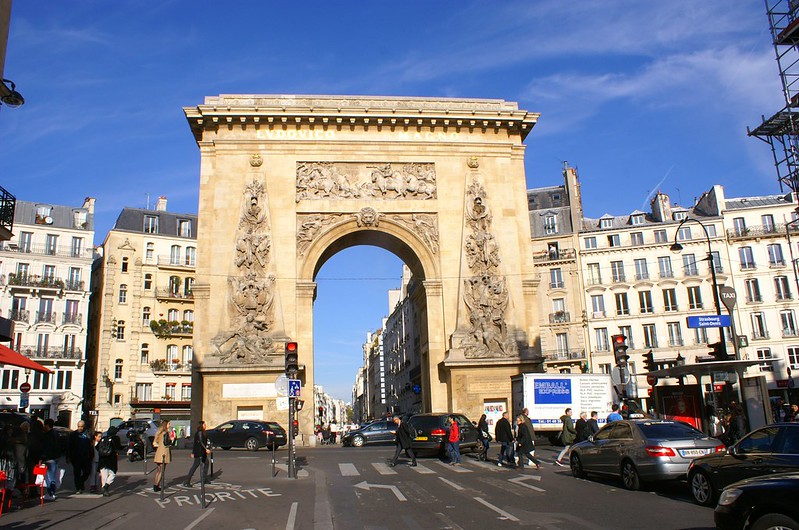
Porte Saint-Denis
Photo par dany13 (Flickr) / Licence CC BY 2.0
At that time, Louis XIV, sure of his military power and the effectiveness of his border defense strategy, had the fortifications around Paris removed. They are replaced by embellishments which will give a spectacular side to the entrance to the city. Other gates, quite close to these, were built or planned, but no other are visible today.
The iconography is also to the glory of Louis XIV. Thus, for example, the bas-relief below, visible on the Saint-Martin gate represents the 10th of the 12 labors of Hercules (Hercules slaying Geryon ). But this Hercules, half-naked, proudly holding a club, also wears a wig. It is therefore Louis XIV who is represented here, with all the modesty that characterized him. The sculpture allegorically evokes the rupture of the Triple Alliance during the war of devolution.
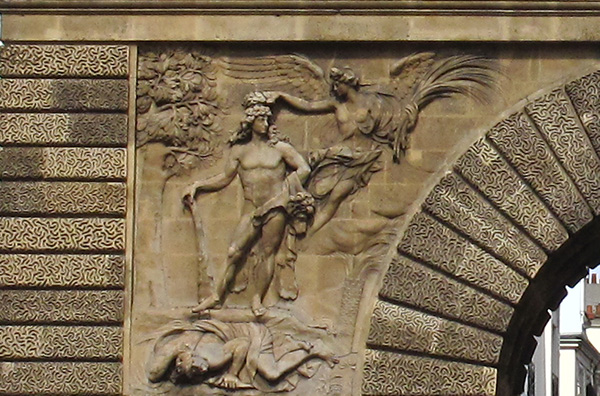
The Carrousel triumphal arch
The following arch appears somewhat isolated, between the Louvre and the Tuileries Gardens. When it was built in 1806, the Tuileries Palace, the emperor’s residence, was still standing. The Carrousel triumphal arch was then a monumental entrance (the Tuileries Palace was burnt down in 1870).
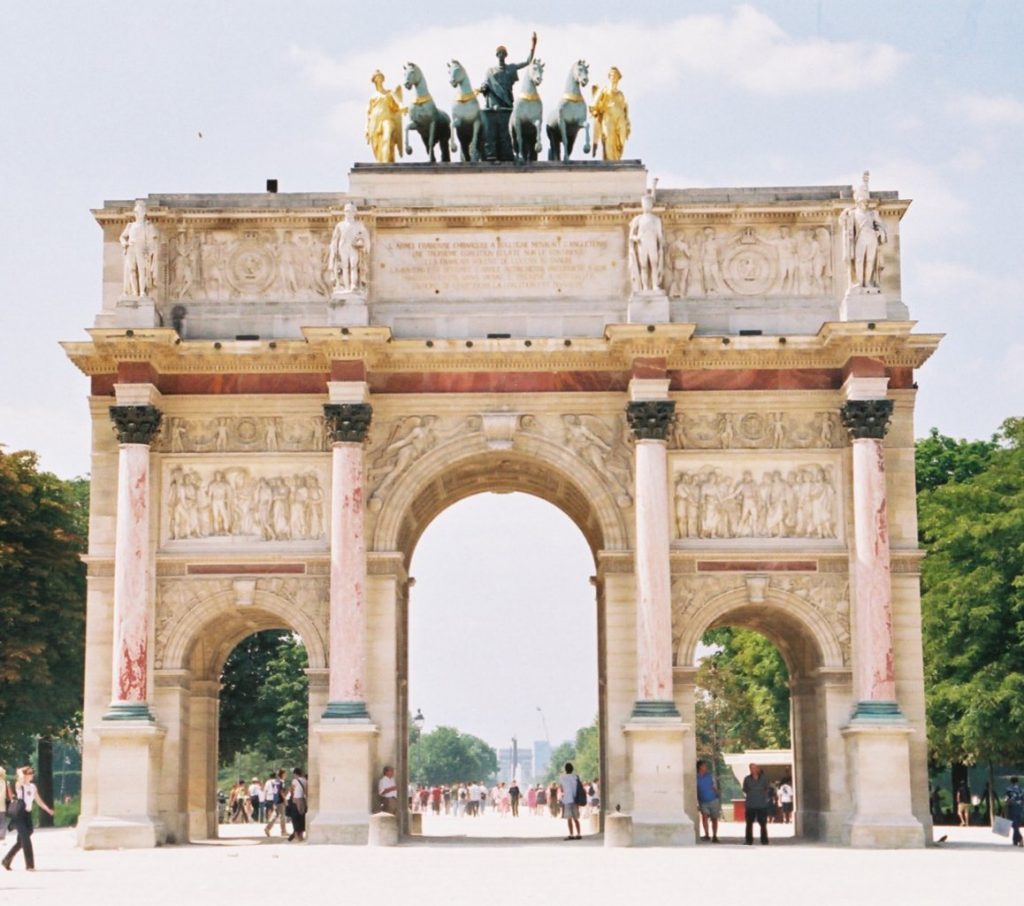
The arc celebrates the victories obtained by Napoleon and his Grande Armée during the campaign which had just ended at Austerlitz. Bas-reliefs represent different battles and, in the extension of each column, appears a soldier of the Grande Armée (a cavalry officer, a grenadier, a gunner, etc.).
The arch has a magnificent quadriga (4-horse chariot) at the top, surrounded by two Gilded lead Victories.
The Arc de Triomphe at Place de l’Etoile
Complete change of dimensions for the last triumphal arch, the best known, located on Place Charles de Gaulle. It fits into an about 50- meter square. We could easily fit in it the previous three!
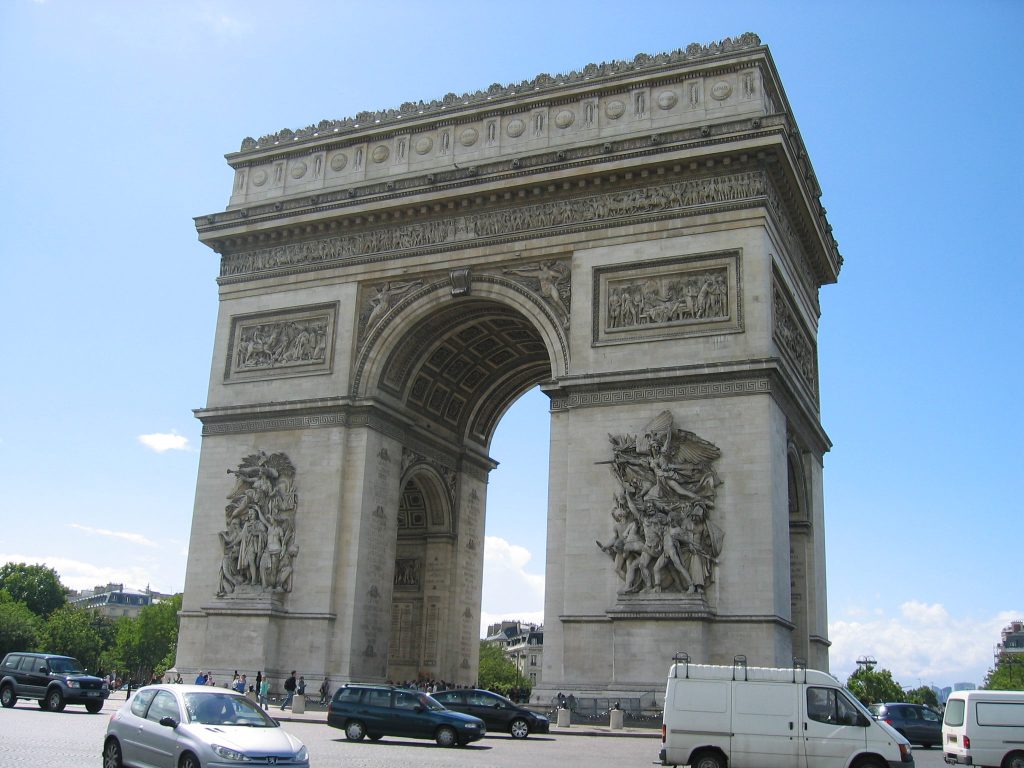
Like the Carrousel arc, it was to honor the military victories of Napoleon I and the Grande Armée. It was started the same year, in 1806, but the construction of a building of this size was not easy. In 1815, when Napoleon was exiled, the arch was only built up to the vaults and thus remained, for many years, abandoned.
It was under the king Louis Philippe that the work ended. France then experienced the Restoration of the monarchy, then a revolution in 1830. It was then a time for national union. The iconography of the monument was revised, in a more encompassing sense. Thus on the pillars, there are 4 high reliefs which cover different eras:
- François Rude’s masterpiece called the departure of the volunteers in 1792 (or the Marseillaise), which highlights national unity during the Revolution
- The triumph of 1810 and the Resistance of 1814, which praised the Napoleonic battles
- The peace of 1815 which refers to the peace which follows Napoleon’s defeat.
Bonus: the triumphal arch of the Place de la Nation
Napoleon I being associated with the Place de l’Etoile, Napoleon III planned to imitate his uncle by creating a symmetrical square to the east of Paris. For this purpose, a triumphal arch was considered. Better, a provisional version was created as shown in this photo on which we see in the background the barrier of the Throne.
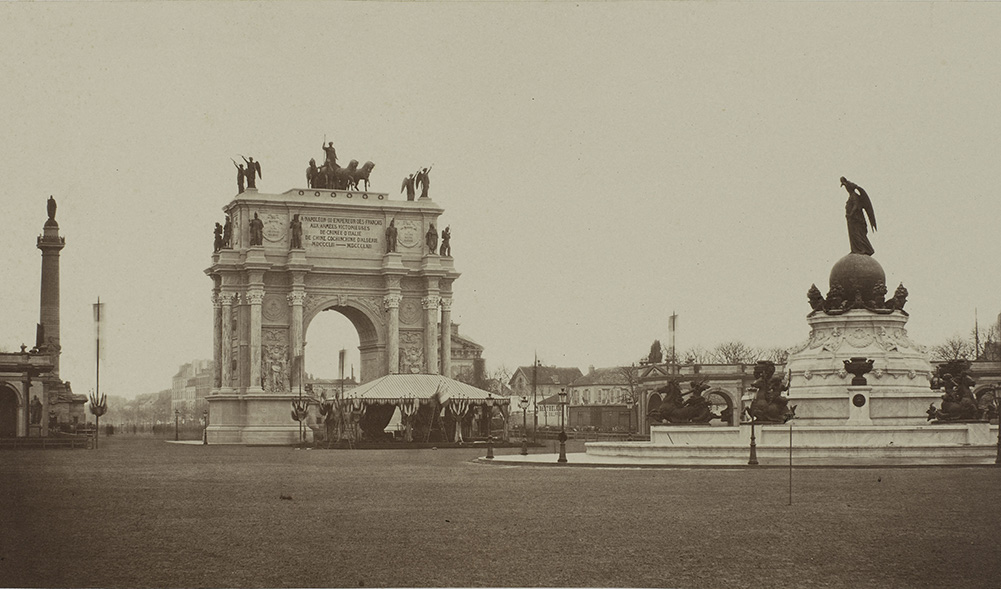
It was therefore a very inspired version of the Carrousel arc, but there will be no definitive version.

